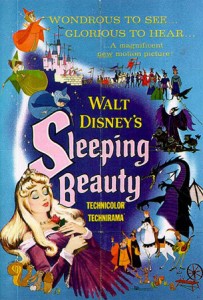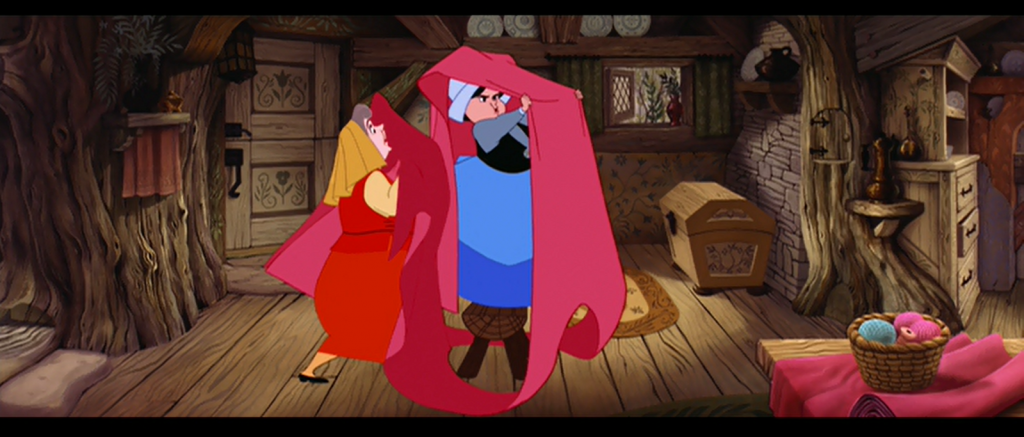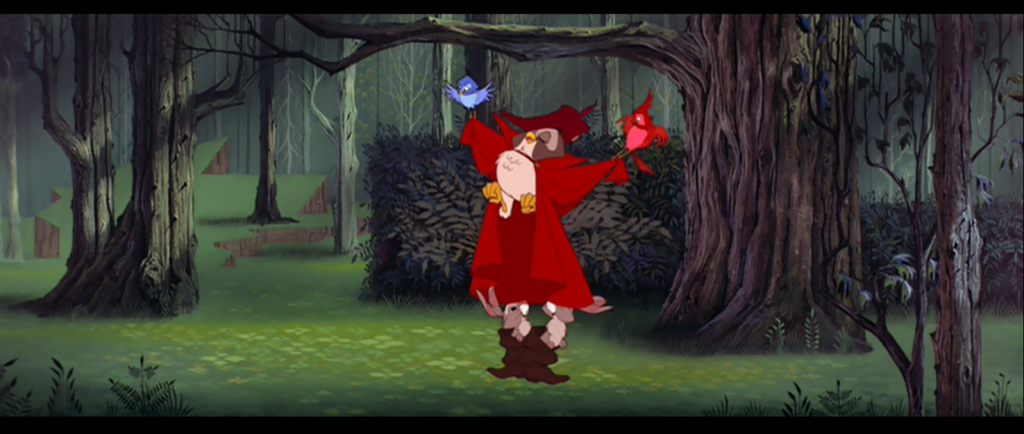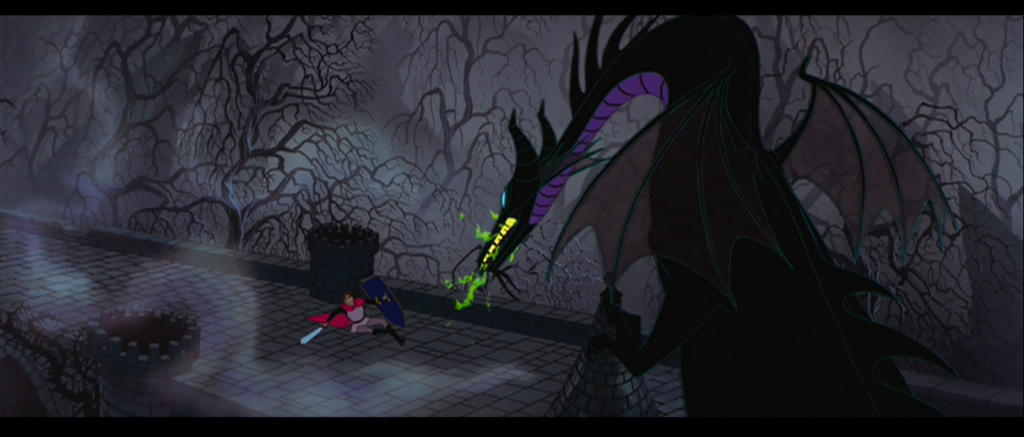|

Synopsis:
An evil fairy named Maleficent (Eleanor Audley) — upset about not being invited to the birth celebration of Princess Aurora (Mary Costa) — curses her to die on her 16th birthday. In an attempt to keep the princess safe from harm, a trio of goodnatured fairies — Flora (Verna Felton), Fauna (Barbara Jo Allen), and Merryweather (Barbara Ludd) — raise her in the forest; but will she remain safe from Maleficent’s wrath?
|
|
Genres, Themes, Actors, and Directors:
- Animated Features
- Folk Tales, Fairy Tales, and Mythology
- Royalty and Nobility
- Revenge
Response to Peary’s Review:
Peary writes that this “elaborate, charming animated feature by Walt Disney” — the second highest grossing film of the year (after Ben Hur) — has been “criticized for not being humorous enough or exciting enough (until the end) to please children”, but notes that he saw it in a “theater full of quiet kids who were absolutely spellbound”. He argues that while “the animation is not as flamboyant as in other Disney cartoons”, there is nonetheless “some fine detail work” (sadly, this was the last Disney film in which cels were inked by hand), and the Technicolor hues are truly gorgeous. Indeed, the animation style (inspired by European medieval painting and architecture — see stills below) is strategically different from that found in other Disney features, in part because — according to a bit of IMBd trivia — Disney’s “constant mantra to his animators” was that Sleeping Beauty could NOT be like Snow White and the Seven Dwarfs (1937).
While Peary refers to Aurora as “one of the sexiest and most beautiful of Disney’s animated heroines”, she unfortunately — much like Snow White — can’t really be considered the film’s central protagonist, given that she only appears on-screen for 18 minutes. Meanwhile, her romance with Prince Philip (Bill Shirley) is as slight and meaningless as Snow White’s with Prince Charming. Instead, it’s Aurora’s fairy godmothers — “who are like three lovable, squabbling, slightly daffy maiden aunts” — who drive the story forward, and are featured in some of the film’s most enjoyable scenes. The most justifiably celebrated sequence, however, is the “spectacular” “climactic battle on Forbidden Mountain”, between Prince Philip and the evil Maleficent — this scene, while far too scary for young viewers, is a truly thrilling, masterfully animated denouement.
Redeeming Qualities and Moments:
- A unique animation style

- An eye-popping technicolor palette

- Many enjoyable sequences


- The exciting climax on Forbidden Mountain

Must See?
Yes, as one of Disney’s enduring classics.
Categories
- Genuine Classic
- Historically Relevant
Links:
|






One thought on “Sleeping Beauty (1959)”
Must-see for budding ffs, preferably in the company of elder ffs.
If ‘Sleeping Beauty’ teaches us nothing else, it’s that life can be dull without a magic wand. 😉
Certainly the most memorable sequences in ‘SB’ involve some kind of fantastic magic – whether in the service of good or evil. And the film contains an adequate portion of both. It’s interesting, in fact, that a number of the more famous Disney flicks do bring the evil in the world to the forefront, as a kind of early life lesson for kids. I, for one, applaud the practice. At a particular age, kids are going to be prime for such a lesson. (Note Peary’s use of the phrase “absolutely spellbound”.)
Not having seen this since childhood, I was surprised by how quickly it moves. The initial animation sequences are a little bland (I wonder why), but that quickly gives way to wonderfully realized scenes, each rendered with exquisite care. (And how about Maleficent’s first scene! Talk about an entrance! Yikes!)
It’s kind of a relief, in a way, that the story is not slowed down with the addition of more songs. (The film’s main theme song is charming.) The plot is slight and could have lost some of its power by using filler. Then, of course, there are those attention spans of younger viewers…
Overall, this is a tale well told. The writing is solid for a story of this sort; nothing particularly overdone or sappy. The story’s build is compact and the final conflict is indeed a stunning achievement.
We come away with the idea that virtue and truth are to be prized. and that it is only true love that awakens the one that waits for it. All of that can play out nicely in real life, one way or the other.
Fave bit: the squabble over whether the dress should be pink or blue. This joke continues shamelessly – and is effectively used as a button on the film.